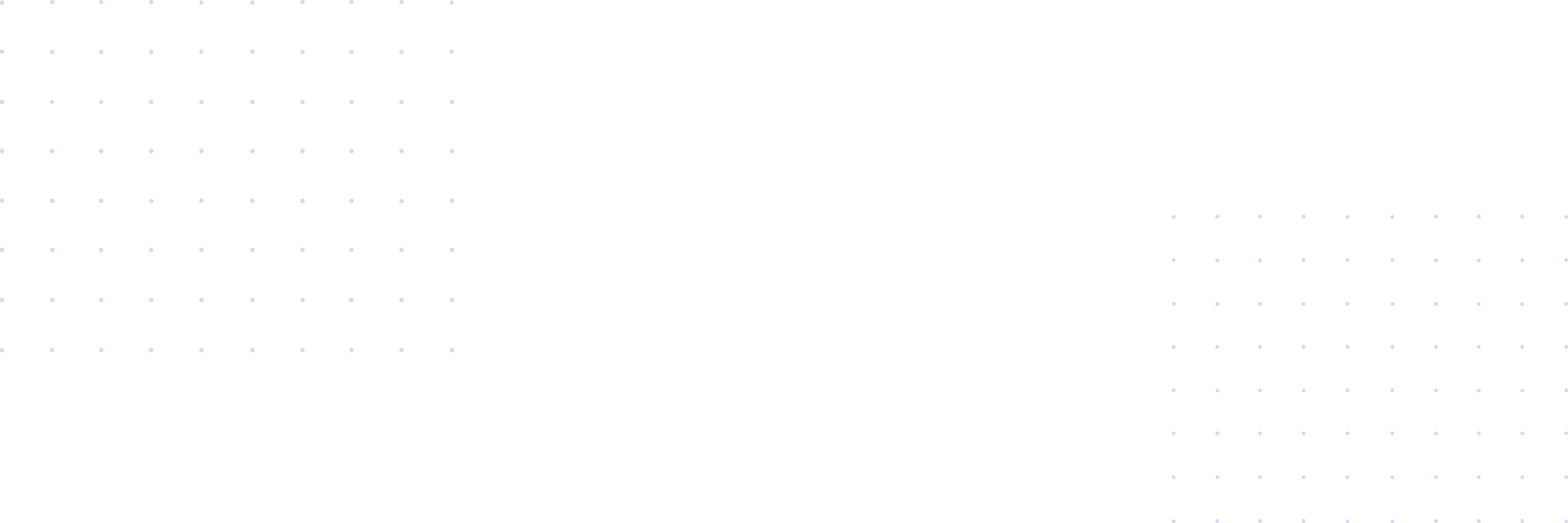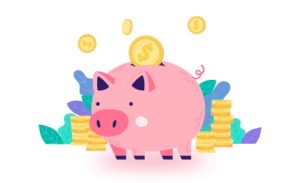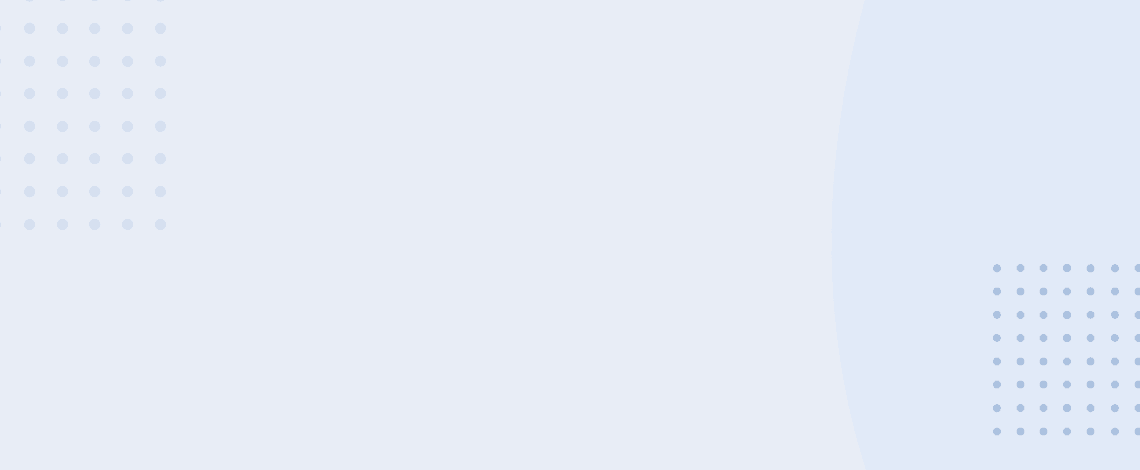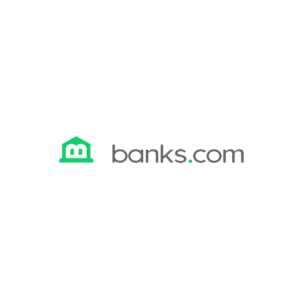Many people set financial goals. People want to buy real estate, retire sooner, and go on vacations. A savings account is one of the financial products that makes these goals more feasible. It’s the cornerstone for any path to financial freedom that opens up many opportunities. You can earn interest on these accounts, capitalize on perks, and use these funds to buy assets in the future. Knowing how savings accounts work and the available options can help you get better with your money.
What are Savings Accounts?
Savings accounts are financial accounts offered by many banks. The majority of these accounts are insured by the FDIC, and you should only work with a bank that has this insurance. Savings accounts allow you to store your money with a bank instead of hiding the funds under a rug.
Savings accounts are designed for long-term financial goals due to their higher interest rates. These accounts grow faster than checking accounts but are typically limited to six withdrawals per month. The interest accumulated on a savings account is risk-free. You can earn a higher return with various investments, but each of those investments can lose capital.
How Savings Accounts Work
Banks use savings accounts to store your money so you can readily access it. You can use your savings account to make purchases from anywhere in the world, but these accounts are better for long-term goals. While checking accounts help with everyday expenses, savings accounts help with more ambitious plans, such as making a down payment.
Savings accounts pay out interest based on the APY and how much funds you have in your account. Consumers with higher savings account balances and higher APYs will earn more interest each year from their accounts. Financial institutions, credit unions, and online banks make it easy to open savings accounts. Many brokerage firms also have money market accounts, which are similar to regular savings accounts.
Savings accounts with higher interest rates typically come with more requirements. You may have to make a larger initial deposit or keep more money in your account to avoid the monthly maintenance fee.
Is Your Money Safe in a Savings Account?
Your money is safe in a savings account. The Federal Deposit Insurance Corporation insures each savings account up to $250,000. This level of protection helped instill more confidence in the banking system when the industry was more fragile. The FDIC has been around since 1933 through The Banking Act of 1933.
The Importance of Having a Savings Account
Having a savings account is a big deal. You have a place to store your money and receive payments if your employer conducts electronic transfers. A savings account can help you plan for long-term goals and keep your spending in check.
Opening a savings account also unlocks other benefits that come with the entire banking experience. Many banks have budgeting tools, high-interest savings accounts, and other resources that can strengthen your money management. You get far more than just a savings account when you get started with a financial institution.
Types of Savings Accounts
Consumers can choose from various savings accounts. These are some of the most popular options.
Regular Savings Accounts
A regular savings account limits you to six withdrawals per month before incurring fees. Any ATM or in-person withdrawals do not count toward the limit. It’s more generous than other types of savings accounts in that regard. Regular savings accounts are basic and fulfill their function of letting you store money. However, better savings accounts exist that can help you earn higher returns on your extra cash.
High-Yield Savings Accounts
High-yield savings accounts are a step in the right direction from regular savings accounts. These accounts have higher APYs, which means your money compounds at a faster rate. These types of accounts may have minimum deposit requirements and minimum monthly balance requirements. Falling below the monthly balance threshold can result in a fee. If you have enough money to open and sustain a high-yield savings account without accruing fees, it’s often a good choice.
You can earn a much higher interest rate with a high-yield savings account compared to a regular savings account or a checking account. High-yield savings accounts can command APYs as high as 4%. However, finding a regular savings account exceeding 0.50% APY takes a lot of work. It would be even more difficult to find a checking account that exceeds 0.10% APY. Those low-interest rates make it almost impossible to build wealth. High-yield savings accounts solve this problem.
Certificate of Deposit Accounts
Certificates of deposit tend to offer the highest interest rates. While CDs let you earn risk-free money, opening an account requires storing your money for an extended amount of time. Each certificate of deposit has a term that you get to set. Most banks let you choose terms that range from three months to five years. Picking a lengthier term guarantees more interest but also locks up your money for an extended amount of time.
Account holders can withdraw funds from their CDs early. However, making an early withdrawal often results in a penalty fee that wipes out the interest gains. Some certificates of deposit do not have any penalty fees, which means you can withdraw the funds with no questions asked.
Some people like that CDs have penalty fees for early withdrawals. These fees discourage people from making early withdrawals from their savings. Consumers who impulsively spend money from time to time may tap into their savings accounts to fund expensive purchases. These types of purchases hurt long-term financial goals.
Locking your money into a CD can increase the likelihood that those funds stay in your bank account. Savings accounts and the ability to spend are very accessible due to credit cards, debit cards, and online banking. However, if you make the funds less accessible through a CD, it can lead to smarter financial decisions.
Money Market Accounts
Money market accounts are similar to high-yield savings accounts. You get an elevated interest rate compared to checking accounts and regular savings accounts. These accounts often have higher minimum balance requirements than traditional savings accounts. You may also have limits on how many checks you can write against the account and how many withdrawals you can make.
Money markets invest in short-term treasury bonds that expire within a few weeks. These short-term investments make these accounts practically risk-free and allow them to reward investors. You can store your money in a money market savings account to realize a higher return on your extra capital. Many of these funds have minimum opening deposits, and you can access your funds at any time. These accounts do not have the same types of restrictions as certificates of deposits.
Online Savings Accounts
Some banks operate online instead of through physical branches. These virtual banks offer online savings accounts, which are more accessible. Many banks with physical branches also have mobile apps that let them access their savings accounts online.
Having online access to your savings account makes it easier to pay bills, transfer funds from your checking account to your savings account, and stay on top of your money. Online savings accounts are a staple for financial institutions, and it would be difficult to find a bank that doesn’t have a mobile app nowadays. Mobile banking apps used to be revolutionary, but they have now become one of the many expectations consumers have.
Understanding Savings Accounts and Interest Rates
Each savings account has an interest rate that determines how much money you receive for storing your cash. Understanding how these rates work can help you understand how much your money can grow just by storing it in a savings account. A deeper understanding of interest rates can also inspire you to seek bank accounts that offer the most competitive APYs (annual percentage yields) in the market.
Compound Interest and How it Works
The interest you earn is based on the interest rate and the amount of money in your savings account. When you receive interest, your balance grows, allowing you to earn more interest for your next payment. The higher interest payment is a result of compound interest.
If someone with a $10,000 balance has a 4% APY, that person receives $400 by the end of the year. The $10,000 balance turns into a $10,400 balance. Next year, the interest rate will remain the same at 4% APY. However, the principal has changed, resulting in a higher interest payment. The 4% APY now applies to $10,400. This results in a $416 interest payment, bringing the total balance to $10,816.
Compounding interest explains why the account holder received a $400 payment in the previous year and then ended up with a $416 payment in the following year. This incremental jump occurs even if you do not deposit additional funds into your savings account.
Making frequent deposits into your account can help you generate more risk-free income from the interest payments. Your deposits represent the work you can do to increase your interest payments. However, the interest rate will also do a good amount of work, especially if it remains elevated. It’s a similar dynamic to investing in dividend stocks. Consumers receive cash flow that they can reinvest for larger cash flow in the future.
How Often Do Interest Rates Change?
Banks can adjust their interest rates as they see fit, especially for accounts with variable interest rates. These rates fluctuate throughout the year, but they rarely go through dramatic changes. Interest rates usually fluctuate within several basis points each year instead of dropping from 4% APY to 2% APY in a single year.
The variability of interest rates in most savings accounts explains why some people rush to certificates of deposit. CDs give you a fixed rate that remains constant throughout the CD’s duration. You will then have to see what rates look like for the new CDs before putting your funds into it.
Is Savings Account Interest Taxable?
The interest you receive on a savings account is taxed as ordinary income. This tax treatment is less favorable than capital gains or qualified dividends. Depending on where you live, you can end up paying more than half of your interest income to the government. Consumers must review their taxable income and assess their federal, state, and local tax brackets. People who earn less income will be able to keep more of their interest after taxes.
It’s also important to note that you don’t have as many opportunities to write off interest income. You can only offset interest income with deductions you would have used anyway. Other than the resources already available, regardless of whether you receive interest or not, you have no way to offset your interest payments.
Other investments and cash flow have more potential for trimmed tax bills. Stock investors can sell some of their companies at losses through tax harvesting, and real estate investors can take advantage of many tax deductions. Those opportunities don’t exist with interest income, but it is a risk-free income source. Just make sure you account for interest income when calculating your taxes. It may be worth putting a risk-free interest-bearing account into a Roth retirement account to avoid paying taxes on the gains.
Pros and Cons of Savings Accounts
Savings accounts have various advantages and disadvantages. Knowing the pros and cons can help you decide how much money to put into your savings account.
Pros of Savings Accounts
- Your money is safe: The Federal Deposit Insurance Corporation insures up to $250,000 in each bank account. This level of protection gives you a safeguard in case the bank goes out of business. Consumers receive a different level of protection with paper cash they hide at home or with most of their other assets.
- Receive interest: Your savings account will grow each year due to the interest payments. Consumers can look for savings accounts with respectable yields, with some of them at 4% APY. A higher interest rate lets you earn more on your money, and compounding growth can help you achieve your goals sooner.
- Easy access to your money: Almost every bank has a website and a mobile app that make it easy for you to access your funds. This easy accessibility can help you make credit card payments, transfer money between accounts, and stay on top of your finances.
- The extra tools: A savings account is one part of a bank’s digital ecosystem. You will receive various resources like budgeting tools that can help with your money management. You can also take out a loan or use another financial product if you need it.
- The ability to create multiple accounts: Consumers can create multiple savings accounts to group their long-term goals. You can create a savings account for a down payment, car purchase, vacation, and any other objective.
- The risk-free component: Savings accounts do not lose value unless you withdraw funds. This is different from stocks and real estate, which are not guaranteed to generate positive returns. You can end up losing money with any investment.
- Lock your rate: Some bank accounts, like certificates of deposit, let you lock in an interest rate for an extended amount of time.
- The funds are easily accessible: You can tap into the funds to cover a down payment and other expenses as soon as you are ready. Other accounts, like traditional retirement plans, require you to reach a certain age to avoid a high penalty for early withdrawals.
Cons of Savings Accounts
- Inflation reduces your purchasing power: Each year, inflation reduces your purchasing power. Inflation is the reason the $100 doesn’t offer the same mileage now as it did in 2000. With inflation ticking higher and growing, it has become a larger concern. High interest rates don’t always outpace the rate of inflation.
- Interest gets taxed as ordinary income: You can end up paying half of your interest income to the government, depending on your tax bracket and location. Consumers should consider the tax implications of receiving interest income before committing to CDs and high-yield savings accounts. You may end up with less money than you anticipated. However, making some money through a savings account’s interest payments is better than not earning extra income on your reserves.
- Your savings balance doesn’t grow as quickly as other assets: Every year, there seems to be a stock that doubles in value. Stocks and real estate move much faster than savings accounts, especially the investments that prove to be generational winners. Your savings account can’t get lower unless you make withdrawals. However, there is a significant opportunity cost with keeping your money in a savings account instead of investing the funds.
- Fees: Savings accounts can lead to cumulating fees. The costs can increase if you don’t fulfill the minimum balance requirements and frequently overdraw your account.
- The funds are too easy to access: While accessibility is a great advantage, consumers must use this perk responsibly. Some people readily move their cash from savings to checking for a large expense. Spending your money on unnecessary items can hinder your progress with long-term financial goals. Using a more restrictive savings account like a certificate of deposit can mitigate this risk.
Important Features of Savings Accounts
Banks have been leveling up their features and offering more for their consumers. However, it’s important to decipher extraneous features from the ones that matter the most. These are some of the important features you should look for in a savings account.
Initial Deposit and Minimum Balance Requirements
Some banks have minimum deposit requirements for you to open an account. While regular savings accounts rarely have this requirement, you may have to store money in the bank to access high-yield savings accounts and CDs. The minimum deposit can be as low as $100 or as high as $1,000. Some banks set higher minimums, so comparing that detail is important.
Banks also frequently set minimum balance requirements. Your account must fulfill this minimum balance requirement to avoid monthly maintenance fees. Some financial institutions do not have this requirement, making them more attractive choices in the process.
Withdrawal Limitations
Most savings accounts let you make up to six withdrawals per month. This restriction was required for a long time, but recent law changes no longer restrict consumers to six withdrawals per month. Some banks have not dropped this limit, while others let you conduct as many withdrawals as you want.
Some withdrawals do not count toward the limit. In-person withdrawals and withdrawals at ATMs typically do not count toward the six monthly withdrawals most banks offer before tacking excessive withdrawal fees onto your account.
You should also see how financial institutions handle withdrawals for different types of savings accounts. Banks charge penalties for CD withdrawals in most cases, but some banks offer no-penalty certificates of deposits. No-penalty CDs allow you to withdraw funds without incurring the penalty. You still get to keep all of the interest income you earned to date.
Overdraft Protection
Overdraft fees can turn a savings account into an expensive liability. Most banks charge overdraft fees ranging from $30-$35 for each transaction that overdraws your account. Some banks charge multiple overdraft fees per day if you attempt to overdraw your account multiple times in a single day.
Not everyone monitors their finances daily; surprise expenses can get them closer to a negative balance. Banks need safeguards in place to reduce the likelihood of someone paying the overdraft fee. Some banks let you overdraw your balance by up to $100 before tacking on overdraft fees. Other banks let you use the funds in another account to compensate for the overdraw.
Banks with the best overdraft protections should be placed above banks that do not have sufficient safeguards in place. The best way to save yourself from overdraft fees is to earn more income and hold onto it. However, it’s good to sign up with a bank that has your back in case it takes some time for the extra income to show up in your account.
Automatic Transfers
Automatic transfers allow you to take the funds in your checking account and move them into your savings account without any manual effort. You can decide how much money to move to your savings account each month and know that the process takes place.
Many people use automatic transfers to streamline their financing and spend less time in their bank accounts. You can also automatically set up your savings account so a set amount of dollars go into index funds and other assets each month. Automatic banking is a staple component that you should look for before committing to a bank.
Other Account Perks
Banks offer many perks that extend beyond high interest rates and the common features already discussed. Consumers should look for banks that provide financial tools and resources that can help them with budgeting, investing, money management, and other components of wealth building.
It is also a good idea to see what types of loans and credit cards the bank offers. Some people have bad credit and need secured credit cards and credit builder loans to get fresh starts. Does your bank offer those financial products? If you plan on getting home soon, you should see if your bank offers mortgages and what types of rates they have on their loans.
A bank is far more than just a single account. It is an entire experience. Ensure you are happy with the experience and everything involved before opening a savings account.
How to Find The Best Savings Account
Consumers can choose from many savings accounts. Banks compete with each other to offer the best perks for their users, but some accounts are better than others. These key factors can help you distinguish mid-tier accounts from some of the best choices around.
Comparing Interest Rates and APY
Interest rates and APY dictate how much you will receive from your savings account if you store your funds. Interest rates reflect how much you will receive if you immediately move the interest payments out of your savings account. APY indicates how much you will earn if you keep the interest payments in your savings account and let them compound.
Banks have been setting higher APYs for their savings accounts in recent years. It’s possible to receive interest payments as high as 4% of your bank account’s value each year. Interest rates are a decisive factor each consumer should analyze. Even if a bank doesn’t have the best features, a high-interest rate can set it apart from the competition.
In that scenario, you can open a high-yield savings account with the bank that has the highest interest rate. Then, you can look for a bank offering a better experience and use that account for your everyday expenses. You can have accounts open at multiple banks to capitalize on the best rates and features across different providers. You can end up leaving considerable money on the table by opting for a regular savings account or sticking with your current financial institution.
Evaluating Fees and Charges
Savings accounts have various fees and charges associated with them. Many of these charges are available if you have a sufficient balance in your account. However, it’s good to know what type of expenses you can incur. Many banks have been lowering their fees and removing some of the more common types of fees.
These are some of the common fees to look out for when looking at a bank:
- Monthly maintenance fee: See what the fee is and how much money you need in your account to avoid this cost.
- Out-of-network fee: If you use an ATM outside of the bank’s network, it will likely result in a fee. Some banks offer small reimbursements each month or compensate with large ATM networks.
- Overdraft fee: Most banks charge $30-$35 each time you overdraw your balance. Some banks charge several overdraft fees per day if you continue to make transactions. Other banks have reduced their overdraft fees to $15-$20 and have several protections in place.
- Wire transfer fee: This expensive fee applies to overseas money transfers. It’s easier for some people to avoid wire transfer fees than others, especially with various alternatives to moving cash overseas, such as PayPal. If you see yourself making wire transfers often, check the fee before opening a savings account.
- Insufficient funds fee: It’s similar to an overdraft fee and is for people who do not opt for overdraft protection. The fee can reach up to $35 per transaction. Your purchase will get rejected with insufficient funds, while an overdraft results in the purchase still going through.
- Early account closing fee: Some banks charge a fee if you close your account within 90 days. You can easily get around this requirement by keeping your account open long enough. Don’t work with a bank if you aren’t sure about its long-term viability for your financial plans.
- Excessive transactions fee: You can receive a fee for each withdrawal made above the maximum. Most savings accounts only allow you to make six fee-free withdrawals each month. This is an important fee to evaluate if you frequently use your savings account to cover your living expenses.
Accessibility and Customer Service
If you have any questions, you will have to reach out to customer support. The bank’s representatives will assist you with troubleshooting and any other requests. Some customer support teams are better than others, and you can use sites like Trustpilot to verify the quality of a bank’s customer service.
Review sites offer information that you can’t find on a bank’s website. Many banks talk about how great their customer service is, but reviews from real customers paint the entire picture. You should also see how accessible the customer service team is.
Some banks are only open during weekday business hours, while others offer 24/7 customer support. The method of communication also matters. Some financial institutions only limit their customers to email support. Other banks take the extra step to offer live chat and phone support. More types of support make a bank more favorable. You may not have questions right now, but it’s nice to know you have a good customer support team and various communication methods if the time arrives.
How to Open a Savings Account
A savings account is a critical pillar of financial freedom. These accounts let you store money, collect interest, and disperse funds into investments if you desire. You can follow these steps to open a savings account.
Required Documents and Information
Financial institutions will look through your legal documents and other information before letting you open an account. This process is typically straightforward, and banks will list the documents they want to see.
Online Banking vs. Traditional Banking
Consumers will have to decide if they want an online banking experience or a traditional one. A traditional banking experience involves brick-and-mortar locations where you can deposit and withdraw cash. Traditional banks also offer mobile banking features, but some people like to do their banking at a branch.
Online banking eliminates the physical branches and takes a digital-only approach. These banks may offer higher interest rates on their savings accounts and come with features that are more difficult to find in traditional banks. These banks can offer higher interest rates since they have less overhead than traditional banks.
Many online banks have ATM networks where consumers can deposit and withdraw cash. Some online banks have over 60,000 ATMs in their networks, and any transactions at in-network ATMs do not result in fees. Reviewing a digital bank’s ATM network is important to see if there is enough coverage in your area. Consumers should also check how an online bank handles ATM fees.
You can find ATMs in various public spaces, retail stores, and other locations. An online bank’s ATM coverage can exceed the amount of coverage you can find at a traditional financial institution.
Evaluating Your Financial Goals
A savings account can help you achieve your financial goals, but identifying those goals and creating a timeline can help you allocate your funds effectively. Risk-averse consumers who are closing in on their financial goals may benefit from keeping their money in a high-yield savings account.
However, consumers who want to maximize their potential returns and have lengthier time horizons may want to put a larger portion of funds into their investment portfolios. Everyone should know their financial goals and create them if they haven’t done so already.
Consumers should periodically review their financial goals to track their progress and make any necessary adjustments. Setting financial goals can inspire you to make more income and lead to you raising your current goals in the future.
Making the Most Out of Your Savings Account
A savings account is a valuable financial resource that makes it easier to achieve long-term goals. It’s an extra layer of financial security that accumulates interest every year. Many banks offer savings accounts and a suite of additional financial products. Reviewing several savings accounts can help you determine which account is right for you.









